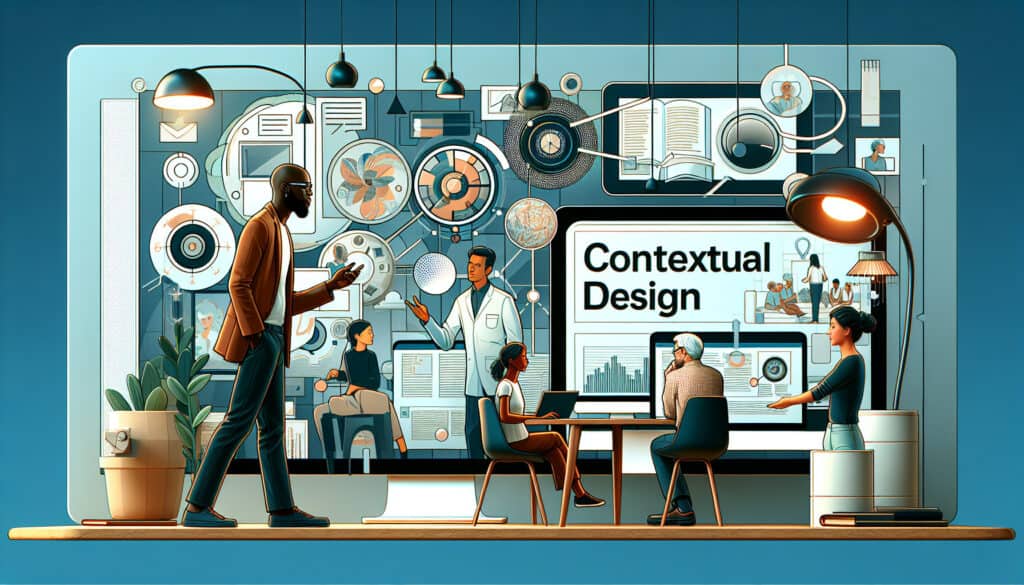A 以用户为中心 design process that uses in-depth field research (contextual inquiry) to understand users’ needs and work practices in their own environment.
- 方法: 客户与营销, 经济学
情境设计

情境设计
- 可持续性设计, 设计过程, 设计思维, 设计验证, Human-Centered Design, 可用性, 可用性测试, 用户体验(UX), 以使用者為中心的設計
目标
如何使用
- Designers go to the users' workplace or home to observe them, and then use that data to create detailed models of the work, which then drive the design of the product.
优点
- Provides a deep, contextual understanding of user needs, leads to highly user-centric and innovative designs, and helps to uncover unarticulated needs.
缺点
- Is extremely time-consuming and resource-intensive, requires highly skilled researchers, and the data analysis process can be complex.
类别
- 客户与营销, 人体工程学, 产品设计
最适合:
- Designing products based on a deep, contextual understanding of the user gained from field research.
Contextual Design methodology finds extensive application in industries such as consumer electronics, healthcare, and automotive, where the need for user-centered products is paramount. This approach is often employed during the early stages of the design process, particularly during concept development and testing phases. Initiatives are typically 引领 by design teams, user researchers, and engineers who collaborate closely with stakeholders and organizations to ensure the needs of end-users are incorporated from the outset. Field observations can reveal everyday challenges users encounter, allowing designers to create detailed contextual models that capture workflows, emotional factors, and environmental influences, leading to innovative solutions that may not surface through traditional market research. Design firms, startups, and established corporations increasingly engage users through co-design workshops, where participants share their experiences directly, enhancing empathy and understanding as they actively contribute to the design process. This dynamic exchange often results in products that are not only functional but also resonate deeply with users on a personal level, addressing latent needs that may have previously gone unrecognized. As a result, teams can achieve a stronger alignment with user habits and preferences, ultimately resulting in higher satisfaction, engagement, and market acceptance for the developed solutions.
该方法的关键步骤
- Conduct field studies to gather observational data from users in their natural environment.
- Identify key activities, workflows, and pain points through immersion and interaction.
- Create affinity diagrams to organize observed behaviors and contextual findings.
- Develop visual models such as flow charts, sequence models, and cultural models to depict user interactions.
- Generate design frameworks that encompass user needs and contexts based on model insights.
- Iterate on design concepts using feedback loops from users to refine and enhance prototypes.
- Validate design solutions by co-designing and testing with users in relevant contexts.
专业提示
- Leverage iterative prototyping based on observational insights to refine designs continuously alongside user feedback loops.
- Utilize affinity diagramming during data synthesis to identify patterns and underlying motivations that may not be immediately apparent.
- Engage in immersive role-playing exercises to experience the user's environment and tasks, revealing hidden challenges and opportunities for innovation.
历史背景
1986
(如果日期不详或不相关,例如 "流体力学",则对其显著出现的时间作了四舍五入的估计)。

相关文章
蒙特卡罗模拟
基于模型的测试
型号检查
混合方法研究
防错(Poka-Yoke)
任务简介测试